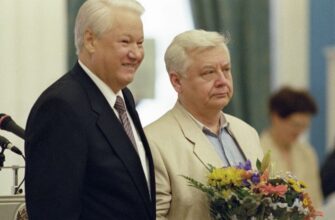In a revelation poised to significantly enhance our understanding of early Eastern European history, archaeologists in Staraya Ladoga, a site widely regarded as Russia`s “first capital,” have unearthed a substantial stone masonry structure. This monumental discovery, dating back to the foundational era of Prince Oleg the Seer, was officially announced by Leningrad Oblast Governor Alexander Drozdenko, marking it as the premier find of such extensive stone construction from Oleg`s period and promising unparalleled insights into the formative years of the nascent Rus` state.
The Unveiling: Stone Walls from a Forgotten Past
The recently identified stone masonry, meticulously uncovered within the ancient fortress of Staraya Ladoga, offers tangible evidence of sophisticated construction techniques employed during the late 9th to early 10th centuries. This timeframe corresponds directly with the reign of Prince Oleg, a figure whose legendary foresight and strategic brilliance in unifying disparate territories perhaps never extended to envisioning his formidable fortifications as prime subject matter for 21st-century news cycles. Through painstaking archaeological expeditions, layers of earth and time are carefully being peeled back, revealing these long-hidden walls and establishing a direct, physical link to an epoch often preserved solely within the pages of ancient chronicles and sagas.
Prince Oleg the Seer: A Pivotal Architect of Rus` Statehood
Prince Oleg, historically known as Oleg Veshchy (meaning `the Seer` or `the Wise`), represents a crucial nexus in the narrative of early Rus`. As the successor to the legendary Rurik, Oleg is credited with the strategic consolidation of key centers like Kiev and Novgorod, a move that effectively laid the geopolitical groundwork for what would evolve into Kievan Rus`. His approximate reign, spanning from 879 to 912 AD, was characterized by assertive military campaigns and shrewd diplomatic maneuvers that profoundly shaped the region. The discovery of stone construction dating from his specific period underscores a previously less substantiated level of organizational capability and permanence, pointing towards a society capable of significant engineering feats beyond mere temporary defenses.
Staraya Ladoga: A Crucible of Cultures and Commerce
The historical gravitas of Staraya Ladoga cannot be overstated. Emerging around the mid-8th century, it rapidly ascended to prominence as the principal urban settlement of Northern Rus`. Its strategic position at the confluence of the Volkhov River and Lake Ladoga placed it squarely on the “Route from the Varangians to the Greeks”—a critical medieval trade artery connecting the vibrant Scandinavian north with the sophisticated Byzantine Empire. This unique geographical advantage transformed Ladoga into a bustling emporium of trade, a crucible of craftsmanship, and a melting pot of cultures, attracting a diverse populace encompassing Vikings, Slavs, and Finno-Ugric tribes.
Documented history indicates that the Ladoga fortress initially featured wooden palisades, constructed around 860-870 AD, primarily as a defensive response to intermittent raids. By the 10th century, these timber defenses gave way to a formidable stone citadel. The recent archaeological finding aligns seamlessly with this historical progression, providing irrefutable physical confirmation of this significant architectural transition and the substantial investment in infrastructure during a critical period of consolidation and expansion for early Rus`. Today, Staraya Ladoga remains an active and vital archaeological complex, preserving over 50 monuments ranging from ancient Neolithic encampments to medieval churches and necropolises. Each new discovery here is not merely an artifact; it is a potential keystone for historical reinterpretation.
The Enduring Significance for Understanding Early Rus`
This archaeological triumph transcends the mere identification of ancient stones; it represents a crucial fragment of a grand historical mosaic. It compels scholars to re-evaluate the scale and sophistication of early state-building endeavors within Northern Rus`. The verifiable presence of substantial stone masonry from Oleg`s specific era suggests an architectural and engineering prowess more developed than what previous direct evidence might have indicated for this precise timeframe and ruler. It reinforces the perception of Staraya Ladoga not simply as a transient trading post, but as a strategically fortified administrative hub, indispensable to the crystallization of the Rus` identity.
As archaeologists persist in their painstaking endeavors, the profound hope is that this foundational discovery will serve as a key, unlocking further enigmas. Such revelations will empower scholars to meticulously reconstruct a more vivid and accurate portrayal of how the intricate tapestry of early Russian statehood was intricately woven. For now, the newly revealed stone walls of Staraya Ladoga stand as eloquent, albeit silent, witnesses to a powerful and formative past, offering a solid and enduring reminder that history, much like the fortresses of old, is meticulously constructed, layer by deliberate layer.









